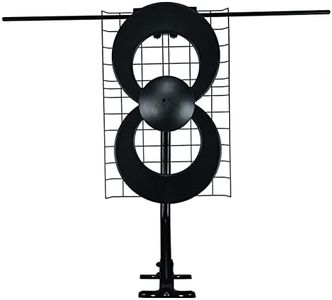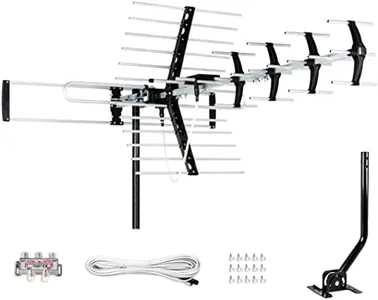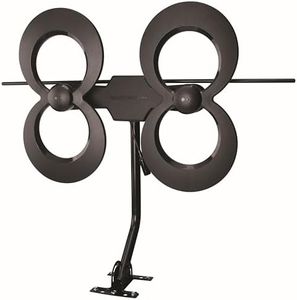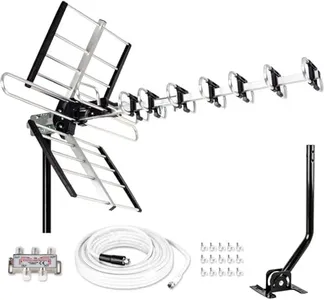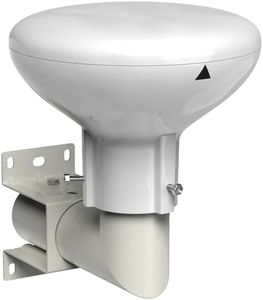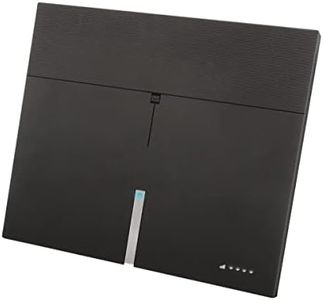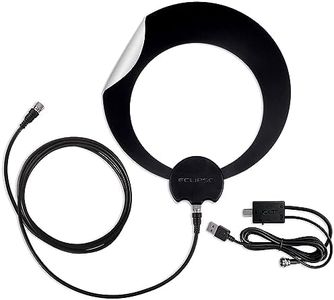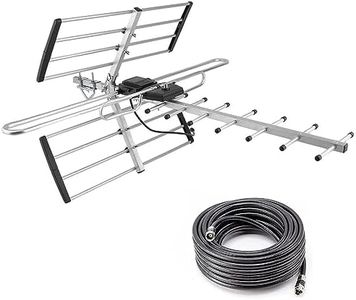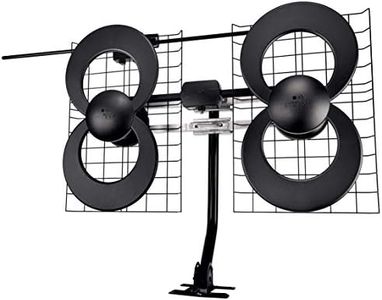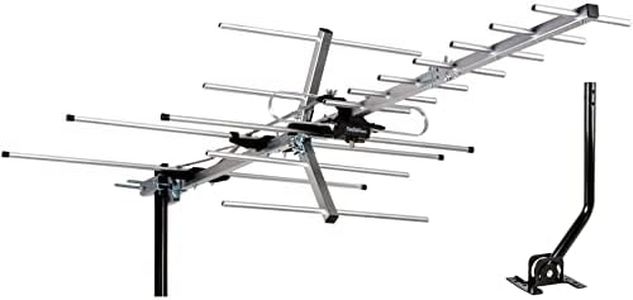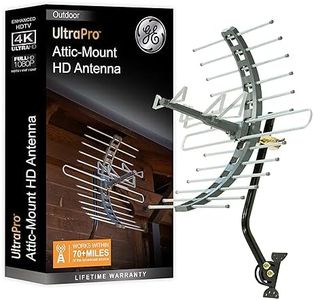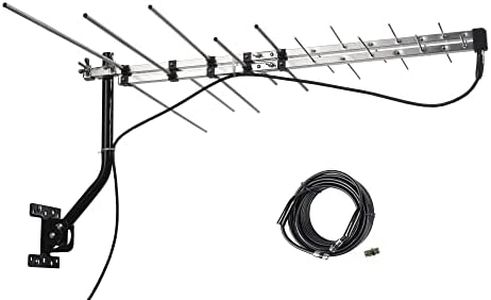We Use CookiesWe use cookies to enhance the security, performance,
functionality and for analytical and promotional activities. By continuing to browse this site you
are agreeing to our privacy policy
10 Best Attic TV Antennas
From leading brands and best sellers available on the web.Buying Guide for the Best Attic TV Antennas
Choosing the right attic TV antenna is all about matching the antenna’s features to your home's location, layout, and your viewing needs. Since attic antennas are installed indoors but often close to the roof, they can offer better reception than indoor antennas while avoiding some of the wiring and appearance issues of outdoor setups. The key is to consider signal strength, distance to broadcast towers, installation space, and the channels you hope to receive. Understanding a few core specifications will help you narrow down your search and make a selection that fits your home and expectations.Reception RangeReception range tells you how far the antenna can reach to pick up TV signals from broadcast towers, typically measured in miles. This is important because homes located farther from towers need antennas with longer ranges to ensure reliable reception. Reception range can be divided into short-range (up to 40 miles), medium-range (40-70 miles), and long-range (over 70 miles). To pick the right one, first check how far your home is from the nearest broadcast towers using an online tool or station map. Choose an antenna with a range slightly greater than your actual distance to ensure signal reliability, especially since attic placement can weaken signals somewhat.
Antenna Type (Directional vs. Omnidirectional)Directional antennas focus on picking up signals from a specific direction, while omnidirectional antennas can receive signals from all around. This spec is important because if most stations you want come from one direction, a directional antenna will give stronger, clearer reception. If signals come from many directions, an omnidirectional antenna may be more practical. To decide, look up your local TV towers and see their directions relative to your house. For clustered signals, go directional; if stations are scattered, choose omnidirectional.
Frequency Bands Supported (UHF/VHF)TV signals are broadcast over two main frequencies: UHF (Ultra High Frequency) and VHF (Very High Frequency). Some antennas only support UHF, while others can handle both UHF and VHF. This matters if your favorite or local channels use one band or the other. Check which frequencies your area’s stations use; most modern antennas handle both, but it’s worth verifying—especially for rural users who may rely on VHF for certain channels. Pick an antenna that matches the bands used by your must-have stations.
Antenna Size and Installation RequirementsAttic antennas come in various sizes, with larger models often offering better reception, but requiring more installation space. Some have wide, flat panels, while others use traditional 'yagi' elements with longer arms. This is important because your attic’s available space, as well as ease of mounting, will determine what you can physically install. Before buying, measure your attic space and note any obstructions. Choose a model that will fit comfortably and can be pointed (for directional types) in the ideal direction.
Amplification (Amplified vs. Non-Amplified)Amplified antennas include a signal booster to help strengthen weak signals, which can be useful in areas with challenging reception or longer cable runs. Non-amplified antennas rely solely on their physical design for signal gain. If you live in an area with moderate to weak signals, or your attic has thick insulation or multiple walls between it and the TV, an amplified antenna might give better results. However, if you’re close to towers and get strong basic signals, amplification is less necessary and can sometimes even introduce interference.
Weather and Interference ResistanceWhile attic antennas are protected from direct weather, they can still be affected by things like nearby metal ducts, insulation, or electronic interference. Some antennas are better designed to minimize this kind of interference, either through their materials or construction. This spec is important if your attic has a lot of metal or heavy insulation, which can block or reflect TV signals. Check installation advice, and consider antennas that advertise resistance to interference if your attic is cluttered or unusual.
